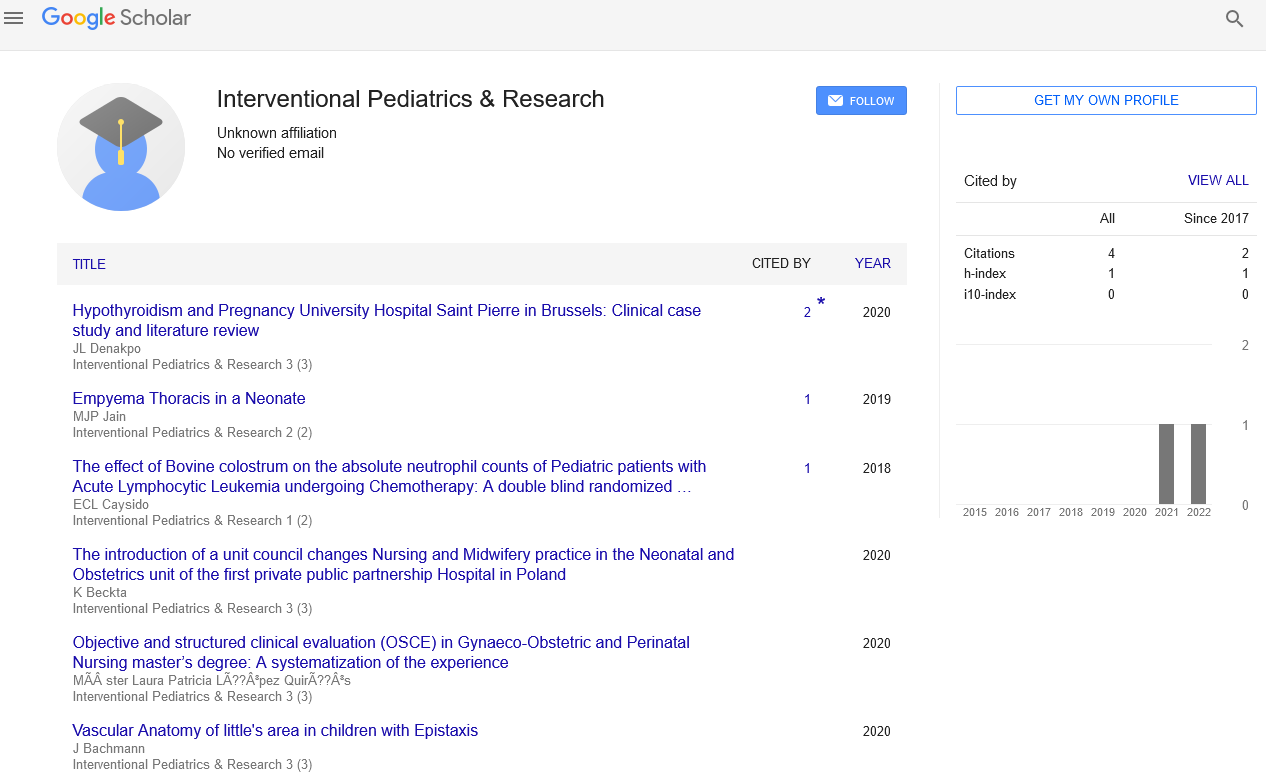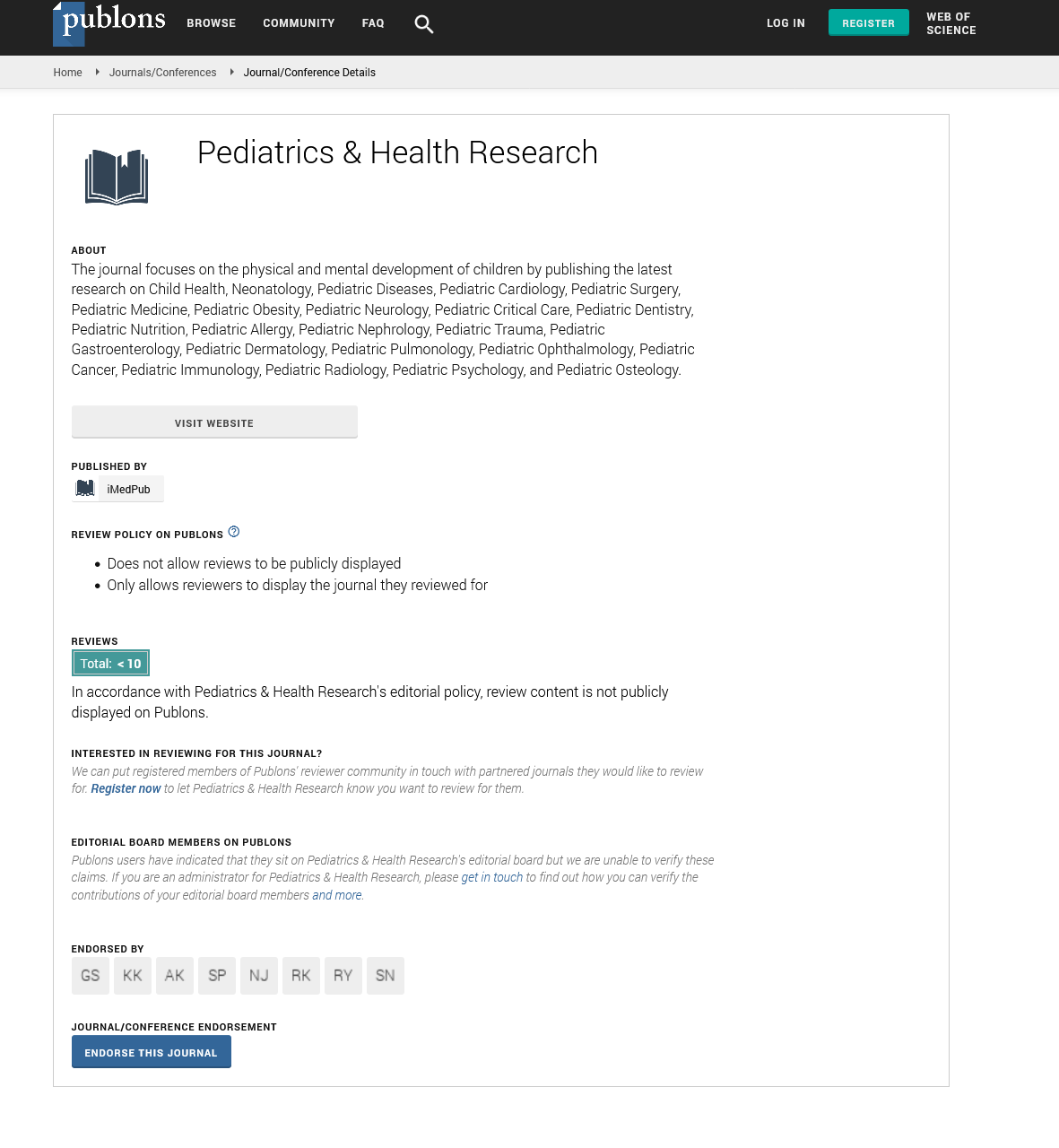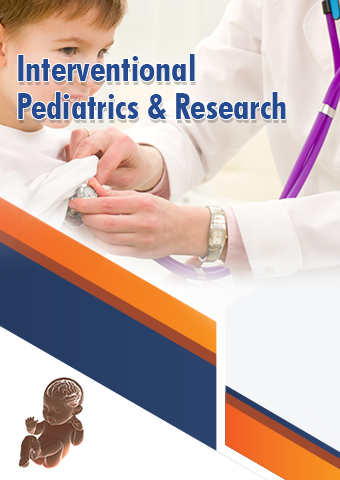Editorial - Interventional Pediatrics & Research (2023) Volume 6, Issue 3
Exploring the Relationship between Cardiovascular Disease, Cancer, and the Peri-Arrest Period
Meera Khan*
Department of Anesthesiology, Weill Cornell Medical College, USA
- *Corresponding Author:
- Meera Khan
Department of Anesthesiology, Weill Cornell Medical College, USA
E-mail: Meerakhan3@gmail.com
Abstract
Cardiovascular disease (CVD) and cancer are two major health burdens worldwide, accounting for a significant number of morbidity and mortality cases. While CVD primarily affects the heart and blood vessels, cancer involves uncontrolled cellular growth and proliferation. Research has suggested a complex association between these two diseases, with emerging evidence highlighting shared risk factors, underlying pathophysiological mechanisms, and treatment implications. Additionally, the peri-arrest period, characterized by the critical moments before a cardiac arrest event, presents a unique context where the interplay between CVD, cancer, and clinical outcomes becomes particularly important. This abstract aims to provide an overview of the relationship between CVD and cancer, focusing on their association in the peri-arrest period. Epidemiological studies have demonstrated an increased risk of cardiac events among cancer patients, highlighting the need for heightened vigilance in this population. Common risk factors such as age, smoking, obesity, and chronic inflammation contribute to both CVD and cancer development, while specific cancer treatments, such as chemotherapy and radiation therapy, may also pose cardiovascular risks. The interplay between CVD and cancer extends beyond shared risk factors, as overlapping pathophysiological mechanisms have been identified. Chronic inflammation, oxidative stress, immune deregulation, and endothelial dysfunction contribute to the development and progression of both diseases. Moreover, certain cancer types, such as haematological malignancies and breast cancer, have been associated with an increased risk of thromboembolic events, further linking CVD and cancer.Understanding the peri-arrest period is crucialas patients with both CVD and cancer face unique challenges during resuscitation attempts. The presence of cancer may complicate the diagnosis and management of acute cardiac events, and preexisting CVD can impact the prognosis and resuscitation outcomes. Additionally, the perilarrest period provides an opportunity to identify previously undiagnosed CVD in cancer patients, enabling timely intervention and improved outcomes. The association between CVD and cancer extends beyond shared risk factors, with overlapping pathophysiological mechanisms and treatment implications. The peri-arrest period presents a critical context for understanding the interplay between these two diseases, highlighting the need for multidisciplinary approaches to optimize patient care. Further research and clinical studies are warranted to unravel the intricate relationship between CVD and cancer during the peri-arrest period and develop tailored interventions to improve outcomes for this vulnerable population.
Keywords
Cardiovascular disease • Blood vessels • Cancer • Endothelial dysfunction
Introduction
Cardiovascular disease (CVD) and cancer are two of the leading causes of death worldwide. While they are distinct medical conditions, recent research has revealed an intriguing association between these two diseases. Additionally, understanding the impact of cardiovascular disease on the periarrest period, the critical time preceding a cardiac arrest event, is essential for improving patient outcomes [1]. This article aims to explore the link between cardiovascular disease and cancer, as well as the peri-arrest period, shedding light on their interplay and clinical implications [2].
The association between cardiovascular disease and cancer
Historically, cardiovascular disease and cancer have been studied and treated as separate entities. However, emerging evidence suggests that they share common risk factors and biological mechanisms. Several epidemiological studies have demonstrated a bidirectional relationship between these conditions, where having one disease increases the risk of developing the other. For example, individuals with established cardiovascular disease have an elevated risk of developing certain types of cancer, including lung, breast, and colorectal cancer. Conversely, cancer survivors have a higher likelihood of developing cardiovascular complications due to various factors, such as chemotherapy-induced cardio toxicity and radiation therapy effects [3].
Shared risk factors and mechanisms
The link between cardiovascular disease and cancer can be partly attributed to shared risk factors. Risk factors like smoking, obesity, aging, and chronic inflammation contribute to the development of both diseases. Additionally, genetic mutations, such as those affecting DNA repair mechanisms, have been implicated in both cancer and cardiovascular pathogenesis [4].
Moreover, common molecular pathways and signaling cascades are involved in the development and progression of both diseases. For instance, chronic inflammation, oxidative stress, and angiogenesis are hallmarks of both cancer and atherosclerosis, the underlying cause of many cardiovascular conditions. The interplay of these mechanisms further supports the association between cardiovascular disease and cancer [5].
The peri-arrest period and its implications
The peri-arrest period refers to the critical time frame preceding a cardiac arrest event.
During this period, patients may exhibit warning signs and symptoms of impending cardiac arrest, which, if recognized and managed appropriately, could potentially prevent the cardiac event or mitigate its impact. Recent studies have shown that cardiovascular disease, particularly in its advanced stages, can significantly influence the peri-arrest period [6].Patients with underlying cardiovascular disease, such as congestive heart failure or coronary artery disease are more prone to experiencing cardiac arrest. Moreover, the presence of cancer in these patients further exacerbates the risk. The underlying mechanisms linking cardiovascular disease, cancer, and the periarrest period are multifactorial and complex. Cardiovascular complications associated with cancer, such as thromboembolism and arrhythmias, contribute to the increased risk of sudden cardiac arrest during the periarrest period [7].
Clinical implications and future directions
Understanding the association between cardiovascular disease, cancer, and the peri-arrest period has important clinical implications. Healthcare providers should consider the presence of both diseases when assessing and managing patients at risk for cardiac arrest [8]. A comprehensive approach involving multidisciplinary collaboration between cardiologists, oncologists, and emergency medicine specialists is essential for optimizing patient care [9].Future research should focus on elucidating the precise mechanisms underlying the association between cardiovascular disease and cancer, as well as the impact on the peri-arrest period. This knowledge can lead to the development of novel preventive strategies, targeted therapies, and improved risk stratification tools for patients with overlapping cardiovascular and oncological conditions [10].
Conclusion
Cardiovascular disease and cancer are interconnected conditions with shared risk factors and underlying mechanisms. Understanding their association is crucial for effective patient management. Moreover, recognizing the impact of cardiovascular disease on the peri-arrest period can help identify individuals at higher risk of cardiac arrest, enabling timely intervention and potentially saving lives. Continued research
References
- Ballantyne A, Newson A, Luna F et al. Prenatal diagnosis and abortion for congenital abnormalities: is it ethical to provide one without the other?. AJOB.9, 48-56 (2009).
- Jomaa M. A challenging diagnosis and management of Herlyn-Werner-Wunderlich syndrome in low-resource settings: a case report complicated with hydronephrosis. Ann Med Surg. 70,102-843(2021).
- Dolk H, Leke AZ, Whitfield P et al. Global birth defects app: An innovative tool for describing and coding congenital anomalies at birth in low resource settings. Birth Defects Res. 113, 1057-1073(2021).
- Bello AL, Acquah A, Quartey JN et al. Knowledge of pregnant women about birth defects. BMC Pregnancy and Childbirth 13, 1471-2393(2013).
- Mbonda A. Diagnosis of Fraser syndrome missed out until the age of six months old in a low-resource setting: a case report. BMC paediatrics. 19, (2019).
- Timothy E. Obstetric ultrasound use in low and middle income countries: a narrative review. Reprod health .15, 1-26(2018).
- Dimopoulos G. Cardiovascular complications of down syndrome: scoping review and expert consensus. Circulation. 147, 425-441(2023).
- Persani L. Central hypothyroidism: pathogenic, diagnostic, and therapeutic challenges. J Clin Endocr. 97, 3068-3078(2012).
- Howard L, Mancuso AC, Ryan GL. Müllerian aplasia with severe hematometra: A case report of diagnosis and management in a low resource setting.J Podiatry Adolesc Gyneco. l32, 189-192(2019).
- Melamed N. FIGO (international Federation of Gynecology and obstetrics) initiative on fetal growth: best pracice advice for screening, diagnosis, and management of fetal growth restriction. Int J Gynaecol Obstet. 1,152 -352(2021).
Indexed at, Google Scholar, Crossref
Indexed at, Google Scholar, Crossref
Indexed at, Google Scholar, Crossref
Indexed at, Google Scholar, Crossref
Indexed at, Google Scholar, Crossref
Indexed at, Google Scholar, Crossref
Indexed at, Google Scholar, Crossref
Indexed at, Google Scholar, Crossref
Indexed at, Google Scholar, Crossref


